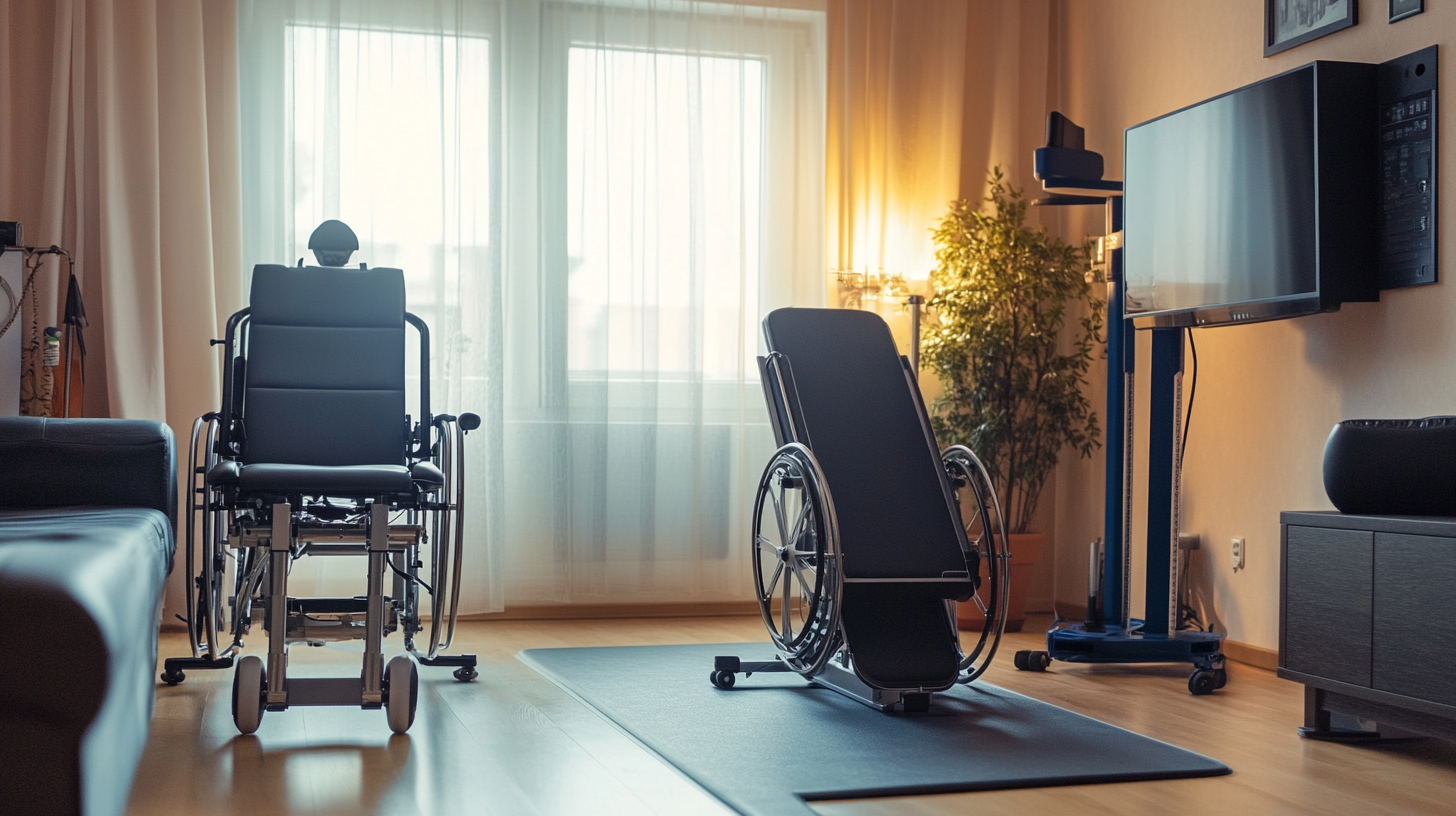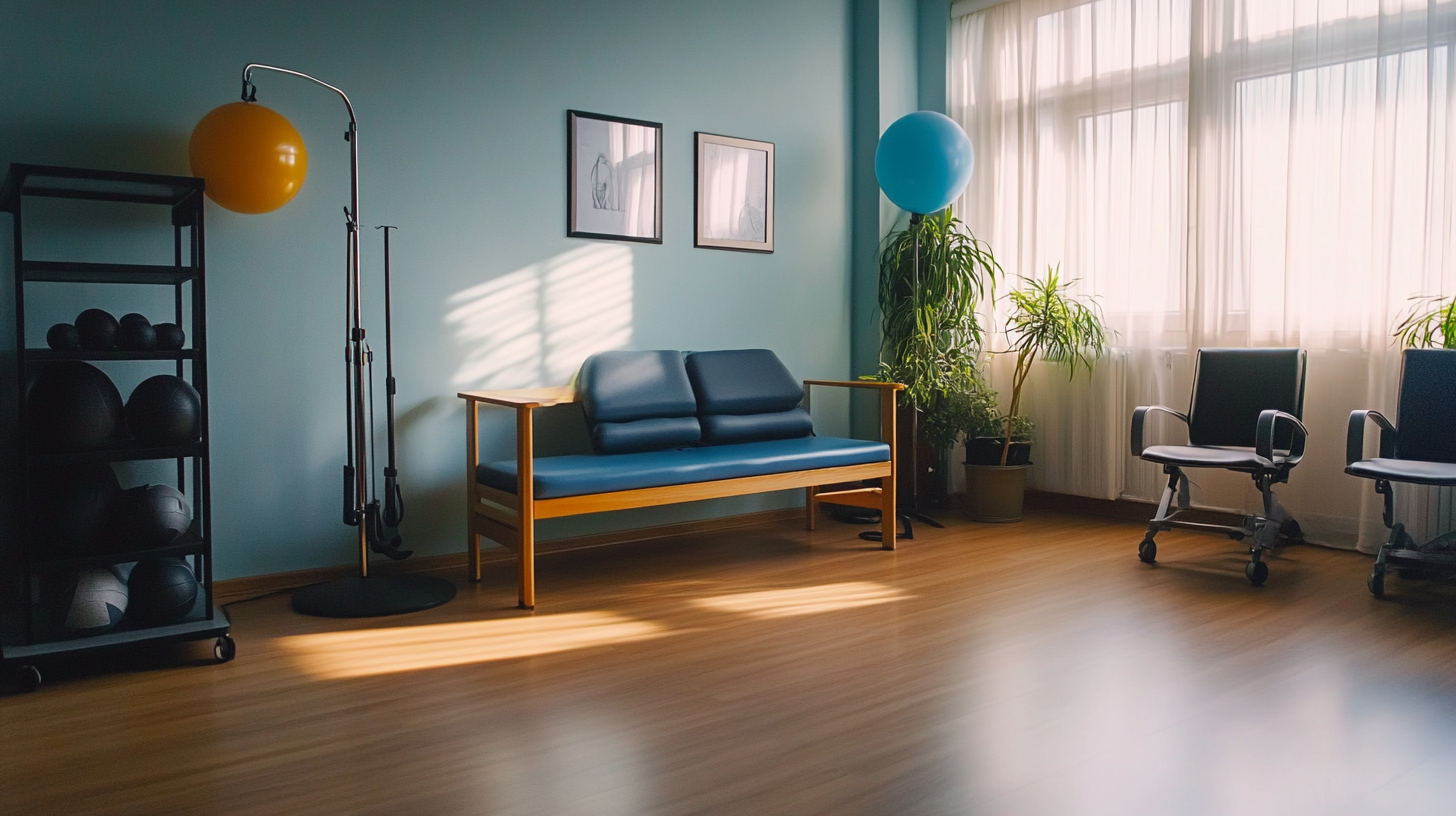Top Strategies for Choosing the Best Rehab Equipment for Home Use
 In recent years, the demand for rehab equipment for home use has surged, driven by an increasing awareness of the importance of rehabilitation and recovery in enhancing quality of life. According to a report by the World Health Organization, approximately 2.4 billion people worldwide live with conditions requiring rehabilitation, underscoring the critical need for effective, accessible solutions.
In recent years, the demand for rehab equipment for home use has surged, driven by an increasing awareness of the importance of rehabilitation and recovery in enhancing quality of life. According to a report by the World Health Organization, approximately 2.4 billion people worldwide live with conditions requiring rehabilitation, underscoring the critical need for effective, accessible solutions.
As innovations in manufacturing continue to emerge, particularly from China, which is recognized for its world-class production capabilities, many consumers now have access to a wide range of high-quality rehab equipment that can be utilized in the comfort of their homes.
With an anticipated growth rate of over 6% in the home healthcare market by 2025, as noted by industry analysts, understanding the best strategies for selecting the right rehab equipment for home use is essential for individuals seeking to optimize their recovery and enhance their independence.
Key Considerations for Selecting Rehab Equipment Based on Recovery Needs and Goals
Choosing the right rehab equipment for home use is essential for effective recovery. When selecting tools, consider your specific recovery needs and goals. Different types of injuries may require different equipment, so it's crucial to tailor your choices accordingly. For instance, if you're recovering from knee surgery, focus on devices that enhance mobility and strength in that area. Consult with your healthcare provider to identify the best options that align with your recovery plan.
Tip 1: Assess your physical limitations. It’s important to choose equipment that matches your current abilities to avoid injury and ensure a smooth rehabilitation process. Start with low-impact tools and gradually progress to more challenging equipment as you gain strength.
Tip 2: Look for multifunctional equipment. Devices that offer a variety of exercises can maximize your workout without taking up too much space. This is particularly beneficial for home use, where space can be limited and versatility is key to maintaining motivation and engagement.
Tip 3: Read reviews and invest in quality. Prioritize purchasing equipment from reputable manufacturers, and gather feedback from other users about durability and effectiveness. Quality equipment can make a significant difference in your rehabilitation experience, facilitating better recovery outcomes.
Top Strategies for Choosing the Best Rehab Equipment for Home Use
Understanding the Importance of Ergonomics in Home Rehab Equipment Choices
When choosing rehab equipment for home use, understanding the importance of ergonomics is crucial. Ergonomics focuses on designing tasks, workspaces, and equipment that fit the user’s needs, enhancing comfort and efficiency while minimizing the risk of injury. Selecting the right rehab equipment—with ergonomics in mind—ensures that individuals can perform their exercises safely and effectively. Features such as adjustable heights, supportive structures, and ease of use can significantly impact a person’s ability to recover and maintain their health.
Moreover, ergonomic design can aid in the prevention of repetitive strain injuries that often accompany rehabilitation efforts. For instance, devices that allow for natural movement patterns reduce stress on joints and muscles, which is essential for maintaining long-term health. Equipment that is tailored to the user's physical condition can enhance motivation and compliance with rehab programs. By prioritizing ergonomic considerations, users can create a home rehab environment that not only facilitates recovery but also encourages a sustainable exercise habit, leading to more positive outcomes in their journey to wellness.
Top Strategies for Choosing the Best Rehab Equipment for Home Use - Understanding the Importance of Ergonomics in Home Rehab Equipment Choices
| Rehab Equipment Type | Key Features | Ergonomic Benefits | Recommended Usage |
|---|---|---|---|
| Resistance Bands | Lightweight, Adjustable Resistance | Supports multiple angles and joint motions | Strength training and muscle rehab |
| Foam Roller | Varied Density, Mobile | Improves flexibility and blood circulation | Myofascial release and stretching |
| Exercise Bike | Adjustable Seat, Digital Display | Low-impact cardio; easy on joints | Cardiovascular fitness and endurance training |
| Hand Gripper | Adjustable Tension | Strengthens grip without straining | Rehab for hand and forearm injuries |
| Balance Trainer | Stable Base, Lightweight | Enhances core stability and balance | Balance training for fall prevention |
Comparing Costs: Budgeting for Quality Rehab Equipment without Sacrificing Safety
 When selecting rehab equipment for home use, budgeting is a critical factor that cannot be overlooked. High-quality equipment enhances recovery and safety, but it often comes with a price tag that may strain one’s finances. To navigate this, start with a thorough assessment of your needs. Prioritize the essential equipment required for your rehabilitation process and research various brands that offer high-quality products at competitive prices. This initial step helps in defining a realistic budget while avoiding unnecessary expenditures on features you might not need.
When selecting rehab equipment for home use, budgeting is a critical factor that cannot be overlooked. High-quality equipment enhances recovery and safety, but it often comes with a price tag that may strain one’s finances. To navigate this, start with a thorough assessment of your needs. Prioritize the essential equipment required for your rehabilitation process and research various brands that offer high-quality products at competitive prices. This initial step helps in defining a realistic budget while avoiding unnecessary expenditures on features you might not need.
Next, consider exploring second-hand options or rental services. Many communities have programs that provide access to gently used rehab equipment at a fraction of the retail cost. While quality and safety must remain paramount, seeking out used equipment from reputable sources can significantly reduce your expenses without compromising on the reliability of the tools you need. Comparing prices across different suppliers and taking advantage of seasonal sales or promotions can also provide added savings. Remember, investing in reliable rehab equipment now can lead to more effective recovery, saving you both time and money in the long run.
Top 5 Must-Have Rehab Equipment for Effective Home Recovery Programs
When setting up a home recovery program, selecting the right rehab equipment is crucial to ensure effective outcomes. The top five must-have rehab equipment for home use includes items that cater to both strength and flexibility, promoting a well-rounded recovery. A high-quality foam roller can significantly enhance muscle recovery, helping relieve tightness after workouts. Similarly, resistance bands are versatile and can aid in strength training without putting excessive strain on the body.
To further enhance your home rehabilitation, consider investing in a massage gun. This tool is excellent for targeting sore muscles and can help accelerate recovery times. Incorporating these essential pieces of equipment into your routine will not only make your rehabilitation process smoother but also more enjoyable. Lastly, personal trainers emphasize the importance of simple yet effective tools like kettlebells and skipping ropes, which can add variety to your workouts while ensuring you stay engaged during your recovery journey.

Research-Backed Evidence: How Proper Equipment Influences Rehab Success Rates
Choosing the right rehab equipment for home use is crucial for maximizing recovery success. Research has shown that appropriate equipment can significantly influence rehabilitation outcomes, as it allows individuals to engage in tailored exercises that meet their specific needs. For example, devices designed for strength training or mobility enhancement can lead to improved functional capabilities, reducing the time it takes to regain independence. Furthermore, studies indicate that when patients have access to the right tools, they are more likely to adhere to their rehabilitation programs, thereby enhancing the effectiveness of their recovery efforts.
Moreover, the psychological aspects of using suitable rehab equipment should not be overlooked. Having equipment that meets the user's preferences and comfort levels can boost motivation, creating a more conducive environment for recovery. Evidence suggests that patients who feel empowered and invested in their healing process often achieve better results. Thus, investing in high-quality, ergonomically designed equipment not only fosters physical rehabilitation but also supports emotional well-being, making it a key factor in determining overall success rates in home-based rehab programs.
